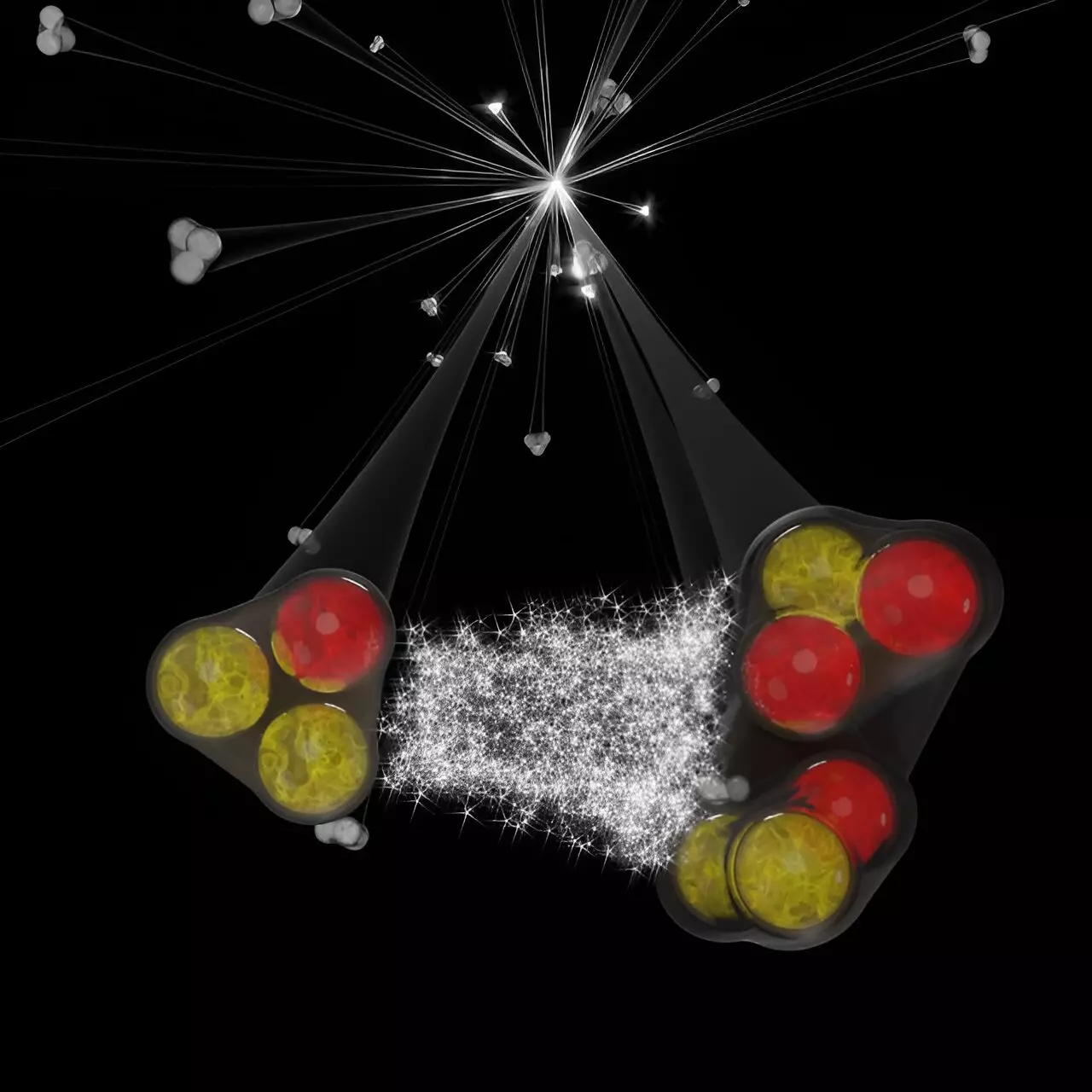Recent findings from the ALICE collaboration, as published in Physical Review X, delve into the complex physics of three-body systems in nuclear interactions, particularly focusing on kaons and deuterons, as well as protons and deuterons. Understanding the dynamics of these interactions significantly broadens our capability to analyze nuclear forces under various conditions. Nuclear interactions are often described in terms of their effect on two particles. However, the reality of three-body systems often leads to complexities that traditional models struggle to address, pointing to the necessity of more sophisticated theoretical frameworks.
Three-body interactions are vital for explaining numerous phenomena prevalent in nuclear physics, including the structure of atomic nuclei and the behavior of matter under high densities, as found in neutron star cores. At the Large Hadron Collider (LHC), proton-proton collisions generate a copious number of particles very close to each other, at a scale near a femtometer (10^-15 meters). Investigating the interactions of particles produced within this extremely small range could yield valuable information about quantum correlations and the fundamental forces governing particle behavior. In such close encounters, particles may influence one another via quantum statistics, electromagnetic forces, and strong nuclear interactions.
The novelty of the ALICE collaboration’s approach lies in their examination of correlations between deuterons and kaons or protons, treating such pairs as part of a triad in which the interactions become three-dimensional and multifaceted. Their methodology involves deriving a correlation function specifically designed to quantify how the likelihood of detecting two particles with a specific set of momenta diverges from the theoretical expectation of independence. If no correlations exist, this function holds a value of unity; deviations indicate either attractive or repulsive interactions depending on whether the value is above or below one, respectively.
In the context of their findings, both kaon-deuteron and proton-deuteron systems exhibited correlation functions that were substantially below unity at low relative transverse momenta. This observation suggests a prevailing repulsive interaction between these particulate systems. Notably, the data uncovered that deuterons and kaons are produced at a relatively close range, around 2 femtometers, which is significant in situating the discovery within the narrow confines of quantum mechanics. The theoretical underpinning of the kaon-deuteron correlation aligns well with an effective two-body model, which intriguingly integrates both Coulomb and strong forces.
Conversely, a similar two-body model fell short in capturing the proton-deuteron interactions, highlighting the necessity for a comprehensive three-body evaluation that incorporates the nuances of deuteron structure. The accuracy achieved in modeling these complex interactions emphasizes the sensitivity of correlation functions to the underlying dynamics of three-nucleon interactions, opening new avenues for inquiry.
Innovations in Three-Body Studies at the LHC
The correlation measurements conducted by ALICE represent a transformative methodology within the realm of nuclear physics, particularly for the investigation of three-body systems. These findings are not merely limited to the scope of kaon and deuteron correlations but pave the way for future investigations involving a broader array of hadronic interactions. The collaboration envisions extending this line of study to encompass strange and charm baryon systems during LHC Runs 3 and 4, which could provide unprecedented insights into previously obscured realms of high-energy physics.
The innovative research by the ALICE collaboration serves as a critical stepping stone towards a more profound understanding of three-body nuclear forces and their implications for the structure of matter. As experimental techniques grow in sophistication and theoretical models evolve to meet these challenges, the quest to decode the complexities of nuclear interactions will undoubtedly continue to enrich our comprehension of the universe at its most fundamental level. Through profound exploration and relentless inquiry, physicists strive to unveil the intricacies of matter, providing clarity to the chaotic dance of particles that underpin the nature of existence.



Leave a Reply